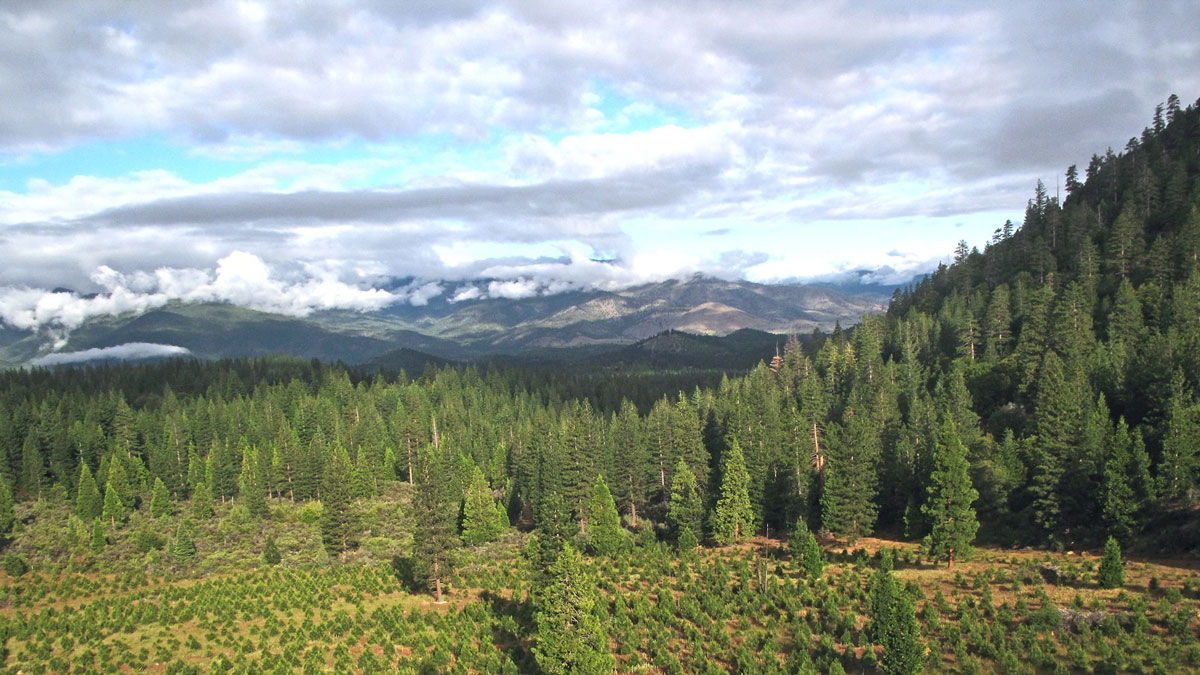Here’s a riddle for you: How can we both increase rainfall around the world and simultaneously decrease the amount of water that’s available? The answer, it turns out, is to plant more trees.
That counterintuitive finding comes thanks to a new analysis, published in Nature Geoscience, of how large swathes of trees affect the amount of water both in the ground and in the atmosphere. It’s a finding with implications for a growing movement seeking to plant trees on an unprecedented scale to combat climate change—a movement that has drawn criticism as unrefined and overly idealistic.
Understanding Trees and Precipitation
One underappreciated impact of tree planting is that it changes the water cycle, said Anne Hoek van Dijke, a postdoctoral researcher at the Max Planck Institute of Biogeochemistry in Germany and a study coauthor. “People that work in forestry aren’t necessarily aware of the effects it has on water availability.”
In the new study, she and her coauthors looked at what would happen to global water availability should we reforest 900 million hectares of land—nearly all the land available for reforestation. The effects are complex, they found, but the main takeaway is that land would, on average, actually lose water.
One reason it’s taken so long to understand how trees affect the water cycle is that studies of the issue have tended to focus on either local hydrology or larger-scale atmospheric effects but never both at the same time, said Edouard Davin, a professor at the Wyss Academy for Nature at the University of Bern. Davin was not a part of the new study.
Trees suck up water through their roots, which decreases the amount of water that’s available in the ground. Studies have shown for years that planting trees leads to reliably lower water levels in nearby streams. But trees also release that water into the atmosphere in a process called transpiration, and the water eventually turns into rainfall—something other studies have pointed out.
The result is that forests tend to dry out their local regions but increase the amount of rainfall in other places. These effects can be extraordinarily far-reaching.
“Studies show that if you change the tree cover in the Amazon forest, this impacts precipitation in East Asia, in Canada, or in Europe,” Hoek van Dijke said.
Worldwide Water Effects
In their paper, Hoek van Dijke and her colleagues combined insights from several new data sets to create worldwide maps of how large-scale reforestation would affect water availability. Water availability declined by 5.3 millimeters per year on average worldwide, they said, even as precipitation increased by 4.2 millimeters per year. That discrepancy is in large part thanks to the fact that around one third of the rain would fall into the ocean, not on land where it’s needed.
“Looking at trees as merely a way to capture carbon is not really doing justice to the way they actually interact with their landscape. They have a huge hydrological impact.”
But the changes in water availability would differ greatly from place to place on the basis of factors like the potential area available for tree planting as well as where the regional precipitation typically comes from. Some regions would see decreases of as much as 38%, whereas others would see increases of around 6%. Countries like the United Kingdom and Madagascar would stand to lose water, whereas lower-latitude regions and the Tibetan Plateau would probably see an increase in water, as increased rainfall there offsets the losses due to evaporation.
Hoek van Dijke cautioned that the study didn’t take into account variables like the future effects of climate change, the impacts of planting different kinds of tree species, or the effects of trees on atmospheric circulation patterns.
But the implications for global reforestation programs, like the World Economic Forum’s 1t.org initiative to plant 1 trillion trees by 2030, are clear, said Sofie te Wierik, a Ph.D. candidate working on green and atmospheric water governance at the University of Amsterdam who was not involved in the study.
“Looking at trees as merely a way to capture carbon is not really doing justice to the way they actually interact with their landscape,” she said. “They have a huge hydrological impact.”
Smarter Reforestation
Hoek van Dijke said that the research shouldn’t be seen as a condemnation of reforestation, but rather a reminder that altering Earth’s ecology on a large scale requires thoughtful approaches. And with the right decisions, we might even be able to take advantage of things like an increase in precipitation caused by tree planting.
“The message we want to give is that people are aware of this,” she said. “With smart planning of reforestation we could avoid losing too much water in dry regions, or we could increase the water availability in dry regions.”
That planning could look like planting trees upwind of drought-plagued or agricultural regions, so the extra moisture provided by the forests rains out where it’s needed most. But more work is needed to understand the interactions between forests and the water cycle before that happens, Hoek van Dijke said. For example, some research indicates that large forests can increase local rainfall by increasing turbulence in the atmosphere, causing more clouds to form.
We’ll likely have more data about reforestation and the water cycle soon, thanks in part to the glut of case studies being planted around the world, scientists said. As reforestation efforts proceed, Hoek van Dijke said she’s looking forward to the opportunities they’ll provide for real-world tests of their models.
—Nathaniel Scharping (@nathanielscharp), Science Writer

